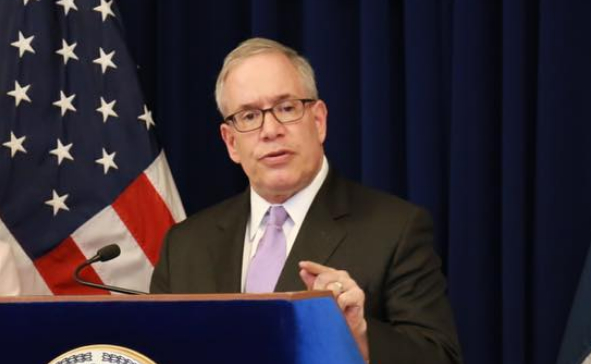
Office of the Comptroller
The comptroller and de Blasio administration have clashed in the past over the potential for developing vacant lots.
Comptroller Scott Stringer claimed Monday that the city has failed to fulfill its promise to develop affordable housing on city-owned property sitting vacant in the five boroughs.
At a press conference in an empty lot in Harlem, Stringer shared data on a follow-up to his 2016 audit where his office found that the city owned 1,100 empty properties, some vacant for 50 years or more.
“When we did our 2016 report, the government promised that developers would go to work on hundred of these properties immediately,” said Stringer. “We were told it was already in the pipeline. They promised, and they said that more than 400 of those lots would be transferred for development for the next two years.”
The new report highlighted that between September 2015 and September 2017 nearly 90 percent of the vacant lots were not developed and they are still in the city’s inventory. More than half of those lots do not yet have a transfer date set.
The Department of Housing Preservation and Development (HPD) in that two-year period only transferred a total of 118 lots out of the 1,100 vacant lots for development and to city agencies, Stringer claimed. The comptroller also reported that even among the properties HPD targeted for development, the timeline for doing so was pushed back in four out of five cases.
“At this rate, it will take the city 17 years to use these vacant lots,” said Stringer. “HPD has done little to nothing in the past 24 months.”
Stringer said that 1,000 empty properties represent 1,000 opportunities to create affordable housing. He noted that there are more than 60,000 homeless people in the city; 23,000 of them are children.
“Homelessness is at an all-time high. We have to treat it as an emergency,” said Jesus Gonzalez, a housing activist*. “These vacant lots are one of the city’s most valued resources.”
1.
Lessons from Vancouver on Taxing Vacant Land to Create Housing
2.
Is ‘Housing Not Warehousing’ Next?
3.
City’s Empty Spaces: What is the Housing Potential?
HPD has in the past questioned Stringer’s contention that all the lots in his tally could be used for residential development, and it took issue with the latest numbers as well. The agency points out, for instance, that a third of the lots in the comptroller’s count are in flood zones in the Rockaways where intense infrastructure work would be needed to make the areas usable.
The de Blasio administration took issue with the comptroller’s math in other ways. HPD says it has put more than 200 lots (not 118) into the development pipeline in the past two years and has included 450 more in requests-for-proposals or other moves to prepare them for development.
The agency also notes that each tax lot does not equate to a developable parcel; one recent HPD project involved 26 tax lots in a single deal. “Your audit and subsequent special report conflate tax lots with development sites, which is confusing to the public,” HPD wrote in its response to Stringer’s findings.
Stringer reiterated his call for the creation of a land bank, which he said could help to develop 57,000 permanently affordable housing units on both city-owned vacant lots and private, tax-delinquent properties.
The comptroller noted that merely getting vacant lots developed wasn’t enough. He’s criticized some of the de Blasio administration’s neighborhood rezonings for providing what Stringer says was too little housing for the lowest-income families. “If you look at people in this neighborhood today, they can not afford what’s called ‘affordable.’ So that means that it’s not affordable.”
“New Yorkers are struggling in an affordability crisis that touches us all,” said Stringer. “We’re no longer just a tale of two cities. We’re becoming a tale of two blocks, with luxury towers on one corner and dilapidated buildings on another.”
* Correction: The original version of this story erroneously identified Gonzalez as employed by Churches United for Fair Housing. He is no longer associated with the organization.








